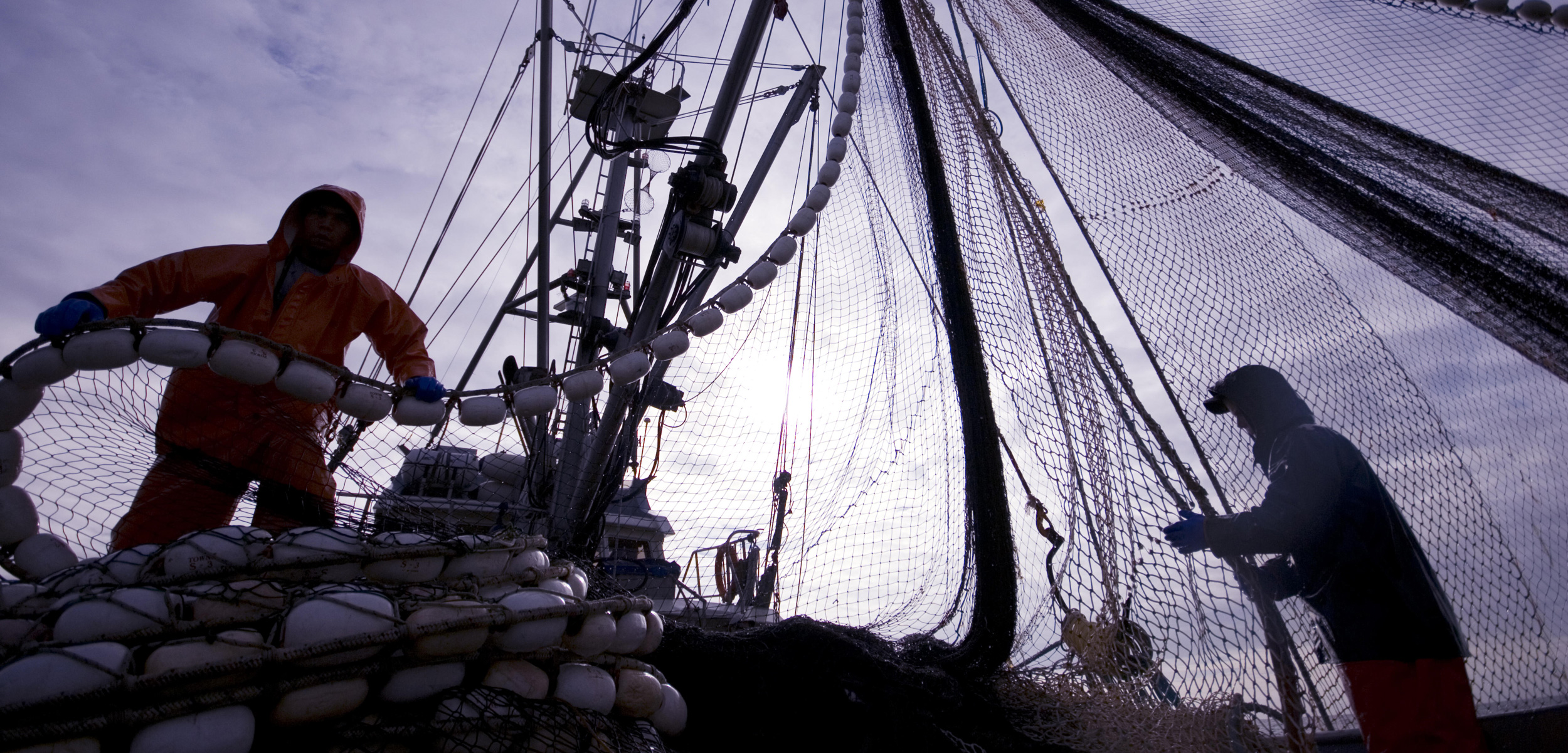Teach the Kids to Fish
By training the next generation of fishers through a hands-on mentorship program, scientists and fishers hope to feed the world for many lifetimes.
Article body copy
Peter Halmay is 76, but retirement is the furthest thing from his mind. He works six days a week diving for sea urchins, organizing his catch, or doing boat work. He spends his day off speaking in front of fisheries managers or working on his latest endeavor—recruiting and educating a new generation of fishers through apprenticeships.
Halmay and Theresa Talley, a scientist from California Sea Grant at Scripps Institution of Oceanography, are in the early stages of developing the apprenticeship curriculum for future fishers in San Diego, California. They hope to have the first class paired with local captains and enrolled as part-time students at local colleges sometime in 2018.
Fishing doesn’t appear to be the kind of industry that will provide plenty of jobs to the next generation. Fleets around the United States are being consolidated and fishers are struggling to turn a profit; in one year—between 2014 and 2015—fishing revenues in the Pacific region dropped 28 percent. Larger fisheries, such as crab, salmon, bluefin tuna, and cod frequently collapse or are closed by regional management councils, creating economic disasters for fishing-reliant communities.
Why then, usher young people into a potentially doomed industry? Talley explains that her ultimate goal is to restore and protect coastal ecosystems so people can live off them again. Ethical and engaged fishers are integral to that vision—they’re potential allies in taking the ocean’s pulse, she says, and Halmay is a prime example. He reads the ocean floor on his dives, noting the health of kelp beds and bottom features: thriving habitats breed high quality urchins. He collects data obsessively, which helps him plan his urchin harvest. Halmay also shares that data with marine biologists at the University of California, Santa Barbara, and the knowledge gathered over the decades helps them monitor Southern California’s kelp ecosystems.
As well as demonstrating to the next generation of fishers that a strong industry-researcher relationship is beneficial, Talley and Halmay are also tackling a chronic problem for small commercial vessels, and one that discourages new fishers: economic volatility. They believe that the problem lies with the specialist approach to fishing, with boat captains relying largely on a single fish species. Instead, they suggest that commercial fleets should practice portfolio fishing, in which fishers harvest different species depending on availability. This strategy requires training since it requires multiple types of fishing gear and permits, but it gives fishers the flexibility to adapt to changing oceans. Some captains are already fishing this way, now it’s a matter of helping the next generation to follow suit, something which Talley and Halmay plan to teach through the apprenticeship program.
With mentors like Halmay and other experienced fishers, the program will impart ideas such as portfolio fishing to San Diego students. With such a reduced fishing fleet, just a few young people are still learning fishing, informally, as part of fisher families. Sai Fukushima, for example, is a 15-year-old, soft-spoken high school student and fisher. He understands the portfolio model and speaks with authority when he says that you cannot run a business on one permit because species might abound one year then disappear for a decade.
Fukushima always knew he’d be a fisherman. He’s been an informal apprentice since age five, tagging along with his fisher dad, learning as much as he can. His father works to make his fishing operation profitable and stable—he’s a marketer, salesman, and business person alongside being a captain. Under his dad’s guidance, Fukushima is learning how to fish and sell underutilized species. Their efforts have seen fish like rock cod, sheephead, escolar, and opah quintuple their market value over the past five years.
Halmay and Talley plan to replicate that kind of mentorship—once so common when there were many more fishing families—in their apprenticeship program.

